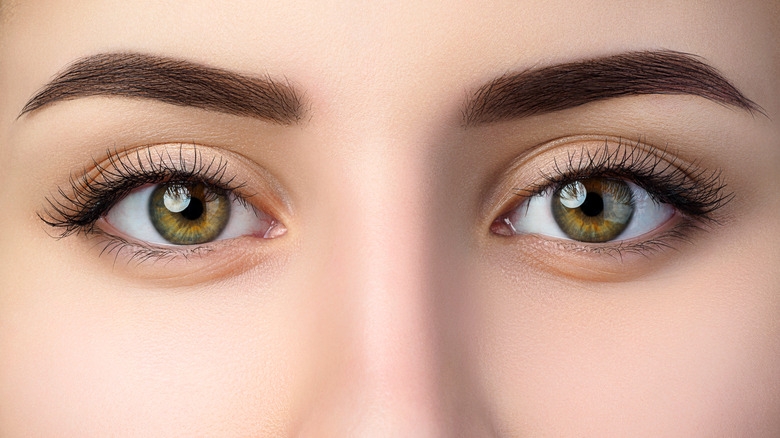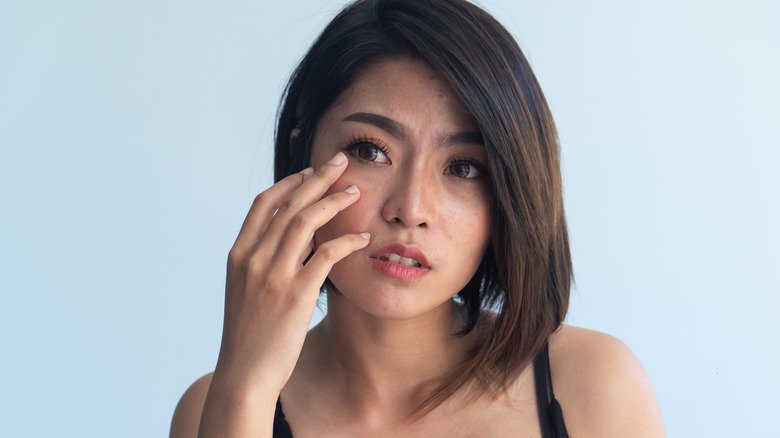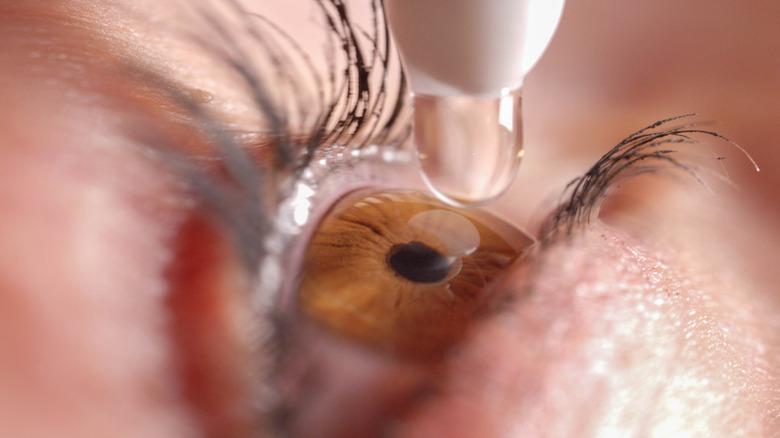Here's The Truth About Why You Get That Annoying Eye Twitch
Sooner or later, most people will experience eye twitching. The sensation, which can feel like someone is gently pulling at your eyelid, is generally a minor annoyance. The medical name for eyelid twitching is myokymia, which can take place in both the upper and lower lids (via Healthline). However, twitching in the lower lid is more common. In some cases, myokymia presents as more significant spasms which cause both eyelids to close. Temporary or benign eye twitching is common and can happen to anyone, while more chronic kinds of eye twitching are twice as likely to occur in women and people designated female at birth (via the Cleveland Clinic). Some types of chronic eye twitching can also be hereditary.
Generally, eye twitches are only short-term and clear up by themselves. But in some cases, symptoms are long-term and can severely impact a person's life. Rarely, eye twitching can be a symptom of an underlying health issue that requires a doctor's attention and more advanced medical treatment. So it's important to be able to recognize when eye twitching is harmless and when it's time to investigate further.
What causes eye twitching?
The good news is the majority of eye twitching cases are completely benign, temporary, and self-healing. General eyelid spasm, the most common kind of eye twitching category, is often caused by a variety of environmental factors. According to Cooper Vision, known triggers include fatigue, stress, and the consumption of alcohol, tobacco, and caffeine. Allergies can also lead to this kind of eye twitching, as can nutrient deficiency and eye strain caused by overexposure to computer screens.
When eye twitching becomes chronic, it often falls into two other categories: benign essential blepharospasm and hemifacial spasm. The former is a movement disorder of the muscles around the eye, which may lead to blurry vision or facial spasms (via the Mayo Clinic). Hemifacial spasm, on the other hand, is usually caused by a blood vessel putting pressure on the facial nerves. Without treatment, chronic eye twitching can lead to complications such as abnormal folding in of the eyelids and muscle spasms elsewhere in the body. In very rare cases, eye twitching is brought on by more serious medical conditions. These include Parkinson's disease, Meige syndrome, multiple sclerosis, Bell's palsy, and brain damage due to stroke (via Cedars-Sinai). Always consult your healthcare provider if your eye twitching lasts longer than one week and is accompanied by additional symptoms, such as facial spasms or eye discharge.
How to treat eye twitching
The treatment for eye twitching depends on the type of twitch and its underlying causes. Most general eyelid spasms will clear up on their own, but it can help to cut back on caffeine, alcohol, and tobacco. WebMD also recommends getting enough rest to speed the process along and using an over-the-counter treatment for dry eyes if the eyes are irritated. Applying a warm, clean compress to the eye and massaging the eyelid with your fingers are simple home remedies that may also relieve twitching (via Healthline).
There's currently no cure for benign essential blepharospasm, but treatments do exist to manage the symptoms. These include recurring injections of botulinum toxin, commonly known as Botox. Alternative therapies — including hypnosis, acupuncture, and chiropractic — are also available, though the efficacy of these hasn't been proven by science. Johns Hopkins Medicine advises that, in rare cases, your health care provider may recommend surgery to address chronic eye twitching that can't be fixed with botulinum toxin. More often than not, twitching caused by lifestyle factors will go away on its own and is no cause for concern. In cases where symptoms persist, consulting your doctor can help you identify more serious conditions before they advance.


